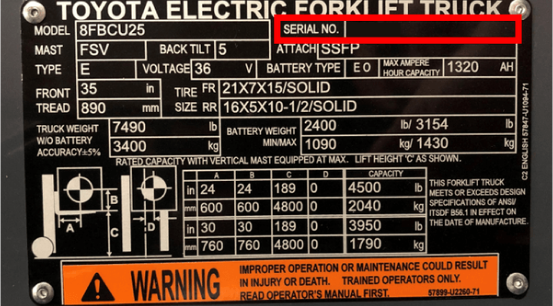General Considerations for Unloading Trailers on Loading Docks

Common Trailer Unloading Mishaps
Clutter– Empty pallets, packing materials and other debris might be trip hazards for workers or cause slippage for your material handling equipment or become entrapped in, under, or around your material handling equipment. For pedestrians and operators alike, this is a point of concern as loading docks have a great deal of traffic including forklifts, warehouse equipment, and pedestrians.
One fundamental practice we use in Toyota facilities is that everything has a place or a home, and everything is put in its place or home. This practice has been effective in eliminating loading dock clutter. All employees know where “home” is for materials so tripping hazards don’t pile up. For example, Toyota facilities use receptacles for plastic wrap, and operators are required to immediately move empty pallets to proper storage locations. Depending on your operation and workplace and material handling considerations, you and your safety consultant should work together to develop standard operating procedures based on your operational needs.
Slick Surfaces– Rain, sleet, snow and spills are some of the contributing factors that may lead to slick surfaces in or around a loading dock. This can cause a slip hazard for both pedestrians and material handling equipment unloading a trailer.
To minimize this risk, keep all surfaces on and surrounding your dock dry. Sweeping, mopping and use of floor fans or dryers can help maintain dry working surfaces. In the case of a spill, workers and operators should be trained on the proper steps to make sure that the spill is cleaned up and disposed of safety and appropriately. If it’s a hazardous substance, you should refer to all applicable rules, regulations and laws for safely cleaning and disposing of them. And remember, if the spill involved a forklift, OSHA requires that the operator be retrained.
Trailer Creep– Trailers can move substantially under the weight of a forklift driving back and forth between the trailer and dock. This is known as trailer creep and it’s a serious safety hazard.
Use of dock levers to bridge the gap between the trailer and loading dock, wheel chocks to prevent tractor and trailer wheel movement, and automatic trailer restraints are all ways to address this potential hazard. Once again, workers and forklift operators should receive safety training that includes the appropriate way to secure trailers at your facility.
Premature Departure– Trucks driving away before a trailer is fully unloaded is a serious concern. To minimize the potential of this occurring, clear communication between truck drivers, forklift operators, and dock managers is needed and should be a part of your safety training. .
Like mentioned above, wheel chocks and automatic trailer restraints are also couple ways to reduce the likelihood of premature departure. Other ways include a lighting system that changes colors depending on the status of the unloading process or taking the truck drivers’ keys until the trailer is fully unloaded. These practices should be considered when augmenting a culture of communication and proper safety training and practices to enhance safety on and around loading docks.


